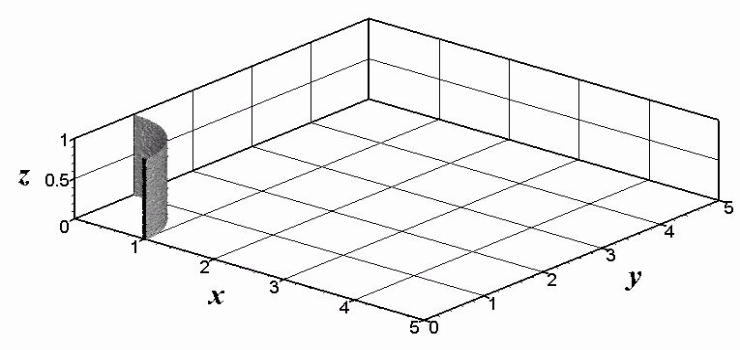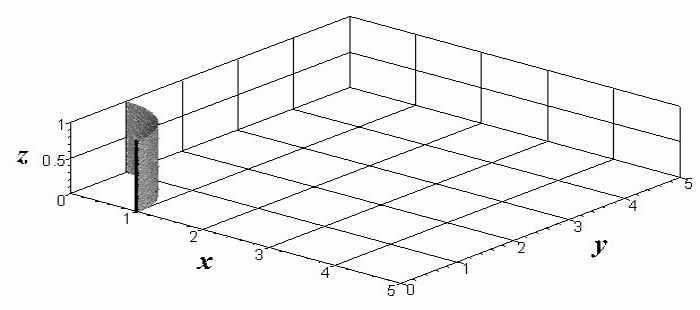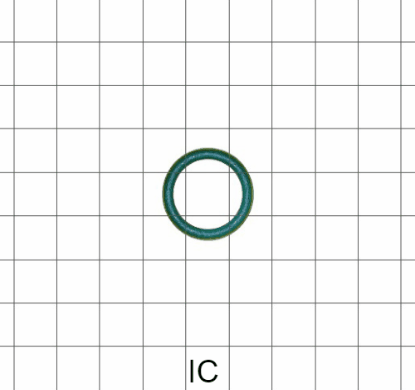Computational Hydraulics Laboratory
Civil Engineering, National Ilan University, Taiwan.
Welcome to the research group of the
Computational Hydraulic Lab
under the direction of Prof. CHING-SEN WU.
The research of the Computational Hydraulics Lab focuses on the study of fundamental phenomena in complex flows. Our studies are motivated by environmental hydraulics and water resource engineering carried out with experimental observations and with developing and running Direct Numerical Simulation (DNS) or Large Eddy Simulation (LES) solvers. Our most recent research has focused on:
-
Density currents
At the present time, the members in our group include 3 master students and a few undergraduate students.
For more detailed information, please visit our research pages using the menu above.
LATEST RESEARCH
-
Head-on collision of gravity currents of unequal strengths


The collision of two counterflowing gravity currents with unequal strengths was experimentally and numerically investigated using laboratory experiments and large eddy simulations, respectively. The collisions were initiated by releasing currents from a partial-depth lock at identical heights but with varying densities, thereby governed by the reduced gravity ratio. The focus was on elucidating the versatile transport processes of colliding gravity currents across the entire range of reduced gravity ratio, encompassing cases driven by momentum strengths comparable to those with disparate momentum strengths. Three dynamically distinct flow regimes were identified based on integrated measures of the contact surface upon collision, the maximum height of updraughts, the temporal evolution of the energy budget, and the mixing rate.
-
Energy balances for the collision of gravity currents of equal strengths


In this study, we investigated the collision of two counterflowing gravity currents of equal densities and heights using three-dimensional high-resolution simulations of the incompressible Navier–Stokes equations with the Boussinesq approximation. The goal is to deepen our understanding of the flow structures and energetics, including the spatial distribution and temporal evolution of the mean flow and turbulence characteristics, in the collision region, in more detail.
-
Gravity Current over an Array of Densified Obstacles


The evolution of bottom-propagating gravity currents with the presence of an array of densified obstacles submerged in a channel is investigated using large-eddy simulations. Our attention is particularly focused on the flow transition of gravity currents over rough surfaces with extra resistance that provokes significant dissipative processes. Two geometric parameters of the roughness elements, namely, the submergence ratio of the obstacle and the array density ratio, govern their kinematic and dynamic effects on the propagation of gravity currents. Physically, the submergence ratio plays a significant role in the control of the current diversion, and the array density regulates the flow pathway of gravity current propagation. The integrated measures show that two distinct flow morphologies are identified.
-
Interactions Between a Gravity Current and an Immersed Obstacle



The interaction of bottom-propagating gravity currents with immersed obstacles in the path of the lock-exchange configuration was investigated based on the large-eddy simulations. The three-dimensional Navier-Stokes solver was quantitatively employed to resolve the flow structure of gravity currents and their dynamics during impact. The integral measure of analysis comprises the front condition, the energy budget, the turbulent mixing, and the force response. Notably, the integrated analysis of gravity currents provides insights into physical mechanisms by identifying distinct propagation stages during transitions, including impact stage, transient stage, and quasi-steady stage.
-
Stratification of Gravity Currents in the Slumping Phase



Experiments on gravity currents produced from full-depth two-layer stratified buoyancy sources propagating in the slumping phase are presented. The flow morphology of two-layer stratfied gravity currents in the slumping phase can be categorized into two different regimes.
-
Unstable Cylindrical Gravity Currents





High-resolution simulations of unstable cylindrical gravity currents when wandering and splitting motions occur in a rotating system are reported. In this study, our attention is focused on the situation of unstable rotating cylindrical gravity currents when the ratio of Coriolis to inertia forces is larger, namely, 0.5 ≤ C ≤ 2.0. A striking feature of the unstable rotating cylindrical gravity currents is the persistent upwelling and downwelling motions, which are observed for both the vortex-wandering and vortex splitting motions.
-
Cylindrical Gravity Currents in a Rotating System




Cylindrical gravity currents, produced by a full-depth lock release, in a rotating system are investigated by means of three-dimensional high-resolution simulations of the incompressible variable-density Navier–Stokes equations with the Coriolis term and using the Boussinesq approximation for a small density difference. Our attention is focused on the situation when the ratio of Coriolis to inertia forces is not large, namely 0.1<C<0.3, and the non-rotating case, namely C=0, is also briefly considered. Depending on the ratio of Coriolis to inertia forces, such a contraction–relaxation motion may be initiated after or before the attainment of a maximum radius of propagation.


